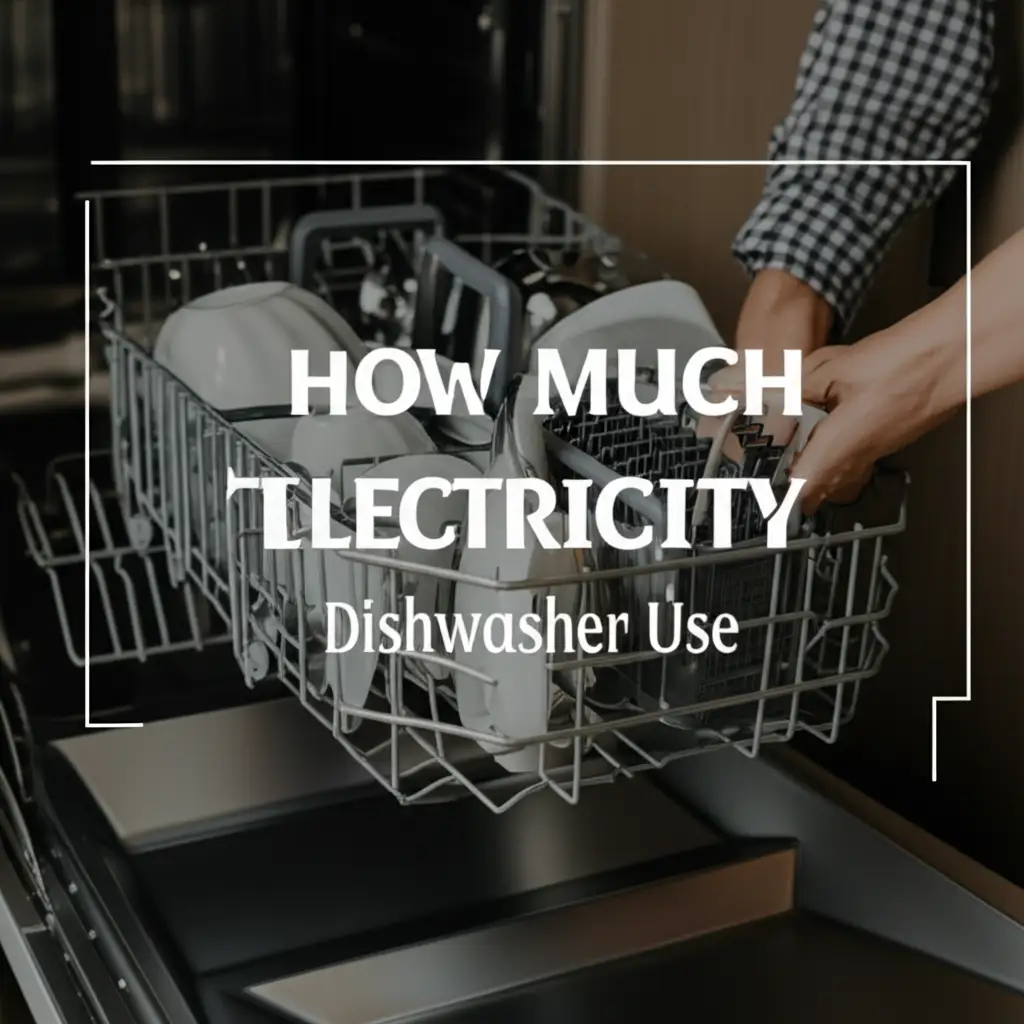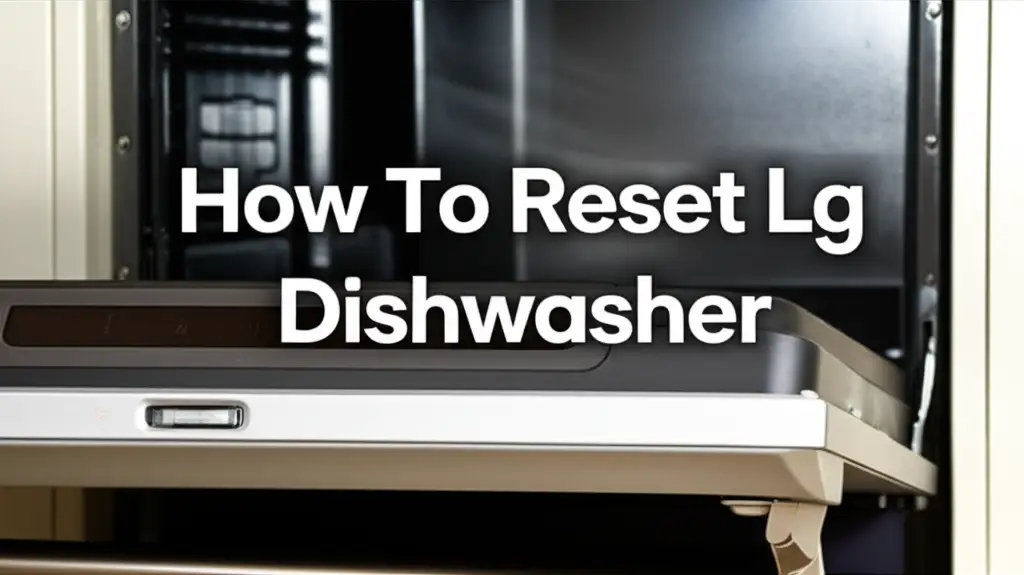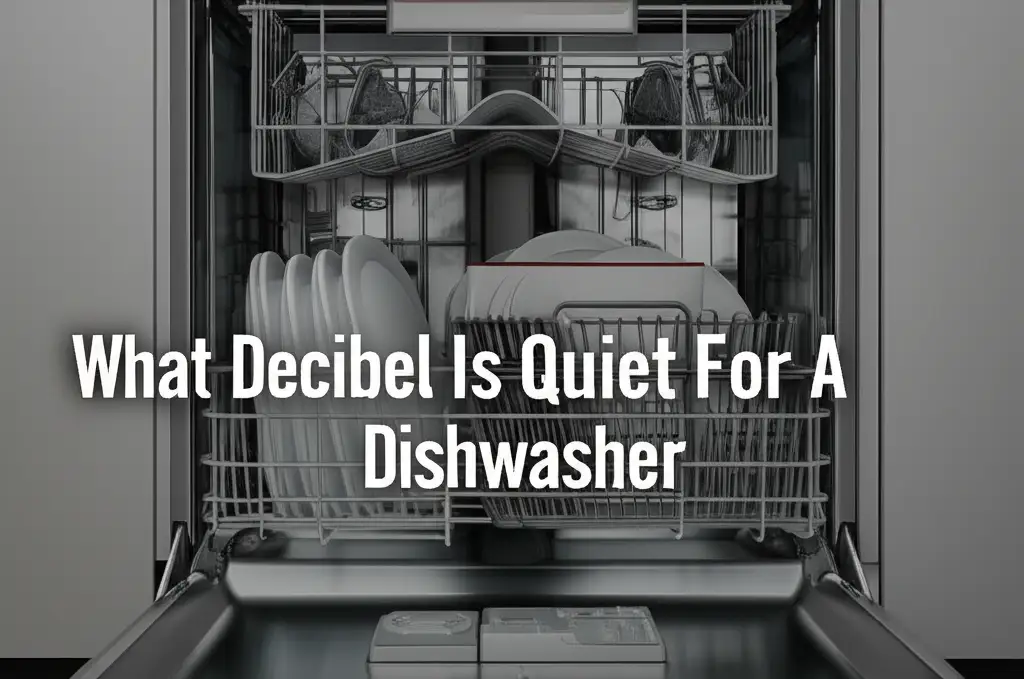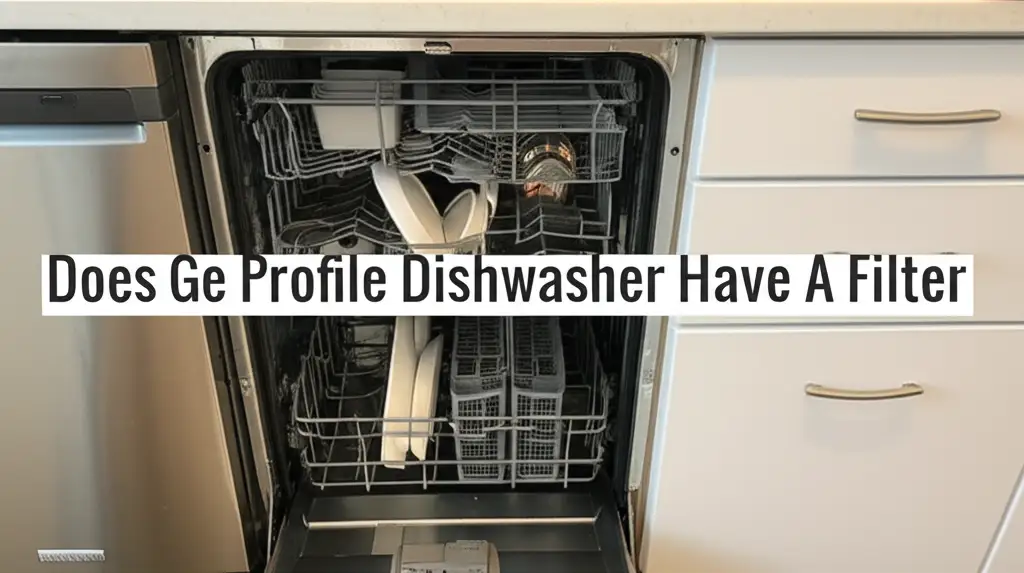· Elira Thomsen · Home Appliances · 14 min read
How Much Electricity Dishwasher Use

How Much Electricity Dishwasher Use: Your Guide to Energy Savings
We often wonder about the energy our home appliances consume. A common question I hear is, “How much electricity dishwasher use?” It is a good question for any homeowner. Understanding dishwasher electricity consumption helps manage household budgets. It also lets you make smart choices for the environment.
Many people use a dishwasher daily without thinking about its power usage. Knowing how much power your dishwasher uses can lead to surprising savings. This article explores average energy consumption, factors that influence it, and practical ways to reduce your energy bill. We will cover everything from cycle selection to new appliance choices. Get ready to uncover the secrets to an energy-efficient dishwashing routine.
Takeaway
Here are the key actions to reduce your dishwasher’s electricity use:
- Always run full loads. This maximizes efficiency per wash.
- Skip the heated dry cycle. Open the door or use air dry.
- Choose eco-friendly or light wash cycles. These settings use less energy.
- Do not pre-rinse dishes. Your dishwasher is designed to handle food scraps.
- Maintain your dishwasher regularly. Clean filters improve performance.
A standard dishwasher typically uses between 1.2 and 2.4 kilowatt-hours (kWh) of electricity per cycle. This figure depends on the model, chosen wash cycle, and whether you use a heated drying option. Older models often consume more power than newer, Energy Star-rated units.
Understanding Dishwasher Power Consumption
Your dishwasher works hard to clean dishes. It uses electricity for several tasks. The main tasks are heating water and running the motor for sprays. Drying also uses power. Knowing this helps us see where the energy goes.
The average dishwasher uses between 1.2 and 2.4 kWh per wash cycle. This number is not fixed. It changes based on many things. Older dishwashers are less efficient. They may use more electricity. Newer models with an Energy Star rating use less power. They are designed for efficiency.
An Energy Star rating means an appliance meets strict energy efficiency guidelines. These dishwashers use less water and less electricity. They save you money over time. When buying a new dishwasher, always look for this label. It is a simple way to pick an energy-saving model. This rating helps you choose a machine that costs less to run.
Key Factors Influencing Dishwasher Electricity Use
Many things affect how much electricity your dishwasher uses. Understanding these factors helps you make smarter choices. Each factor plays a role in your energy bill. We can control some of these factors.
The Heating Element
The heating element is a major power user. It heats the water for washing. It also heats the air for drying. Heating water requires a lot of energy. If your tap water is very cold, the dishwasher works harder to warm it. Most dishwashers have a booster heater to reach high wash temperatures. Skipping the heated dry option can save a lot of electricity. Air drying is always more energy efficient.
Wash Cycle Selection
Different wash cycles use different amounts of energy. A heavy-duty cycle uses more water and heats it longer. This means it uses more electricity. Normal cycles balance cleaning and energy use. Light or express cycles use the least energy. They heat less water and run for a shorter time. When considering energy use, I often recommend looking at which dishwasher setting uses least electricity. This can make a big difference in your monthly bill. Choosing the right cycle for your load is key.
Drying Method
The drying method significantly impacts energy use. Heat drying uses a heating element to warm the air. This consumes a lot of electricity. Most dishwashers offer an air-dry or unheated dry option. This feature uses ambient air to dry dishes. It might take longer, but it uses almost no electricity for drying. Many modern dishwashers also have a fan-assisted dry. This is more efficient than pure heat drying but still uses some power.
Dishwasher Age and Efficiency
Older dishwashers are usually less energy efficient. Technology has improved over the years. New models have better insulation and more efficient motors. They also have smart sensors that optimize water and heat use. If your dishwasher is more than 10 years old, it likely uses more electricity than a new one. Replacing an old appliance can lead to significant long-term savings. This is true even with the upfront cost of a new unit.
Load Size and Pre-Rinsing Habits
Running a full load is crucial for efficiency. A half-empty dishwasher uses almost the same energy as a full one. You are wasting electricity if you run partial loads. Avoid pre-rinsing dishes under the tap. This wastes water and the energy to heat it. Modern dishwashers are designed to handle food particles. Scrap off large food pieces, but let the dishwasher do its job.
Comparing Dishwasher Energy Costs
Understanding how much electricity your dishwasher uses is one step. Calculating the actual cost is the next. This helps you see the real impact on your budget. The cost changes based on your electricity rates.
To calculate the cost, you need two pieces of information:
- The electricity consumption of your dishwasher per cycle (in kWh).
- Your local electricity rate (in dollars or cents per kWh).
Cost Calculation Formula: Cost per cycle = kWh per cycle × Electricity Rate ($/kWh)
Let us say your dishwasher uses 1.5 kWh per cycle. If your electricity rate is $0.15 per kWh: Cost per cycle = 1.5 kWh × $0.15/kWh = $0.225
If you run your dishwasher once a day: Daily cost = $0.225 Monthly cost = $0.225 × 30 = $6.75 Annual cost = $0.225 × 365 = $82.125
These numbers are averages. Your costs can be higher or lower. They depend on your specific appliance and usage habits. Newer, more efficient dishwashers will cost less. Older models will cost more.
Hand Washing vs. Dishwasher
People often debate if hand washing uses less energy than a dishwasher. For most homes, a modern, full dishwasher is more energy efficient than washing dishes by hand. Hand washing often uses more hot water. Heating water uses a lot of energy. People also tend to leave the tap running when hand washing. This wastes water and energy. A dishwasher heats water once and reuses it in its cycles. It also uses precise amounts of water. This makes it more efficient.
Energy-Saving Features in Modern Dishwashers
Modern dishwashers come with smart features. These features help reduce electricity use. They make your dishwashing more efficient. Knowing about these features helps you pick a good model. It also helps you use your current one better.
Sensor Wash Technology
Many new dishwashers have sensor wash programs. These sensors detect how dirty your dishes are. They adjust the wash cycle accordingly. If dishes are lightly soiled, the dishwasher uses less water and heat. This saves electricity. It prevents the machine from running a heavy-duty cycle when it is not needed. This smart technology makes dishwashing more efficient.
Delay Start Option
The delay start feature lets you set the dishwasher to run later. This is useful for taking advantage of off-peak electricity hours. Some utility companies offer lower rates during certain times. These times are usually late at night or early in the morning. Running your dishwasher during these hours can reduce your bill. It shifts energy use to times when demand is lower.
Eco-Mode or Energy Saver Cycle
Most energy-efficient dishwashers include an “Eco” or “Energy Saver” mode. This cycle uses less water and lower temperatures. It usually takes longer to complete the wash. The longer wash time allows the detergent more time to work. This still gets dishes clean with less energy. This mode is perfect for daily loads that are not heavily soiled.
Smart Connectivity
Some high-end dishwashers offer smart connectivity. You can control them from your phone. This allows you to monitor energy usage. You can also start or stop cycles remotely. Some smart dishwashers can even connect to your utility company’s smart grid. This allows them to run when electricity rates are lowest. This technology gives you more control over your energy consumption.
Practical Tips to Reduce Dishwasher Electricity Bills
Saving electricity is simple with a few smart habits. You can cut down on your dishwasher’s energy use significantly. These tips help you save money every month. They also reduce your carbon footprint.
Run Full Loads Only
Always wait until your dishwasher is full before running it. A half-empty load uses almost the same energy as a full one. This means you are wasting energy per item washed. Maximize each cycle’s efficiency. Fill it to capacity without overcrowding. Overcrowding stops water and detergent from reaching all surfaces.
Skip Pre-Rinsing Dishes
Many people pre-rinse dishes before loading them. This is often unnecessary. Modern dishwashers are powerful. They have sensors and strong jets. They are designed to remove food particles. Scrap off large food pieces into the trash. Let your dishwasher do the rest. Pre-rinsing wastes both water and the energy used to heat that water.
Choose Efficient Cycles
Select the right wash cycle for your dishes. For most daily loads, a “Normal” or “Eco” cycle is sufficient. The “Eco” or “Energy Saver” cycle uses less water and lower temperatures. This saves the most electricity. Heavy-duty cycles should only be used for very dirty pots and pans. Knowing which dishwasher setting uses least electricity can guide your choice. It helps you save power on every wash.
Use the Air-Dry Option
The heated dry cycle uses a lot of electricity. It often accounts for a significant portion of the dishwasher’s energy use. Most dishwashers have an air-dry or unheated dry option. Choose this setting. You can also simply open the dishwasher door after the wash cycle finishes. This allows dishes to air-dry naturally. This simple step saves a lot of energy.
Maintain Your Dishwasher
A well-maintained dishwasher runs more efficiently. Regularly clean the filter. Food particles can clog it. This makes the dishwasher work harder. Clean the spray arms too. Make sure the holes are not blocked. A clean dishwasher uses less energy to get dishes clean. It also prevents costly repairs down the line.
Check Your Water Heater Temperature
Ensure your home’s water heater is set to an appropriate temperature. Most dishwashers need water around 120°F (49°C). If your water heater is set much higher, you are wasting energy. The dishwasher’s internal heater will compensate if the water is too cool. However, providing adequately warm water from the start can reduce the dishwasher’s heating effort.
Consider Quick Wash Cycles
Quick wash cycles can save time. They may not always save electricity. While they run for a shorter duration, some quick wash cycles heat water to very high temperatures quickly. This can sometimes use more energy than a longer, lower-temperature “Eco” cycle. It is worth knowing does quick wash use less water dishwasher. Understanding this link helps in making smart choices. Use quick wash only for lightly soiled dishes.
When to Consider a New, Energy-Efficient Dishwasher
Sometimes, making changes to your habits is not enough. Your dishwasher might be old. It might not be as efficient as it once was. Knowing when to upgrade can save you money in the long run. A new dishwasher can be a smart investment.
Signs of Inefficiency
How do you know if your dishwasher is an energy hog? Look for these signs.
- High Utility Bills: If your electricity bills are higher than expected, your old appliances might be the cause.
- Age: Dishwashers older than 10 years are usually less efficient. Energy standards have improved a lot.
- Performance Issues: Dishes are not getting clean. The machine runs loudly. These are signs of wear and tear. It means it is working harder than it should. This can lead to more energy use.
- Constant Repairs: Frequent breakdowns mean the machine is at the end of its life. Repair costs can add up.
Benefits of Upgrading
Upgrading to a new, energy-efficient dishwasher offers many benefits.
- Lower Energy Bills: Energy Star-rated dishwashers use significantly less electricity and water. This directly reduces your monthly expenses. You will see savings over the appliance’s lifespan.
- Improved Performance: New models clean better. They have advanced spray systems and sensor technology. Your dishes will be spotless.
- Quieter Operation: Modern dishwashers are much quieter. This is a big plus, especially in open-concept homes.
- More Features: You get useful features like sensor wash, delay start, and specialized cycles. These make your life easier.
The Energy Guide Label
When shopping for a new dishwasher, always check the yellow Energy Guide label. This label shows the estimated annual energy consumption in kWh. It also estimates the annual operating cost. This helps you compare different models side-by-side. It makes it easy to choose the most energy-efficient option. This label is a powerful tool for smart buying.
Impact of User Habits on Dishwasher Energy Use
Your daily habits play a major role in your dishwasher’s energy consumption. The appliance itself is only one part of the equation. How you use it matters just as much. Simple changes in routine can lead to big savings.
Loading Efficiency
How you load your dishwasher affects its cleaning power and energy use. Do not block the spray arms. Make sure water can reach all dish surfaces. Overloading means dishes do not get clean. This forces you to re-wash them, wasting energy. Underloading wastes energy too, as you run a cycle for only a few items. Load your dishwasher correctly and fully for optimal efficiency.
Frequency of Use
The more often you run your dishwasher, the more electricity it uses. This seems obvious. However, many people run it daily, even for small loads. Consider how many dishes you genuinely have. Can you combine loads? Can you wait an extra day for a full load? Reducing the frequency of cycles directly cuts down on total energy use. Batching your dishwashing helps save power.
Detergent Use
While detergent itself does not use electricity, its proper use affects efficiency. Using too little detergent can lead to poorly cleaned dishes. This may require a second wash. Using too much can create excess suds. This might trigger extra rinse cycles. Read your detergent’s instructions. Use the recommended amount for your water hardness. Proper detergent use helps ensure a single, effective wash cycle.
FAQ Section
Do dishwashers use a lot of electricity?
Dishwashers are significant electricity users, mainly due to heating water and drying. However, modern Energy Star models are quite efficient. They use less power than older units. Their consumption per cycle, typically 1.2 to 2.4 kWh, can add up over time. Factors like cycle choice and drying method greatly influence total usage.
Which dishwasher cycle uses the most electricity?
The heavy-duty or “pots and pans” cycle typically uses the most electricity. This is because it runs for a longer duration, uses more water, and heats the water to higher temperatures. The heated dry option on any cycle also adds substantially to electricity consumption. Choose lighter cycles for daily needs.
Is it cheaper to run a dishwasher at night?
Running a dishwasher at night can be cheaper if your utility company offers time-of-use (TOU) electricity rates. These rates charge less for electricity during off-peak hours, usually late at night or early morning. Check your energy bill or provider’s website to see if you have TOU rates. If not, the time of day does not impact the cost.
Does a dishwasher use more electricity than hand washing?
A modern, full dishwasher generally uses less electricity and water than hand washing a comparable load of dishes. Hand washing often involves running hot water for extended periods. This consumes significant energy. Dishwashers are designed to be efficient with water heating and usage, making them the more energy-efficient choice for most households.
How can I find my dishwasher’s kWh usage?
You can find your dishwasher’s kWh usage on its Energy Guide label. This yellow label usually found on new appliances, provides estimated annual energy consumption. For older models, you can look up your specific model number online. You can also use an electricity usage monitor, which plugs into the wall and measures appliance consumption.
Conclusion
Understanding “how much electricity dishwasher use” is more than just curiosity. It is about smart home management. We have explored the average energy consumption and the key factors that drive it. From the heating element to your chosen wash cycle, every detail contributes to your energy bill. By making informed decisions about appliance use, you can save significant money.
Embracing simple habits like running full loads and skipping the heated dry cycle makes a real difference. Choosing efficient cycles and properly maintaining your machine also plays a vital role. If your dishwasher is old, consider upgrading to an Energy Star-rated model. This investment pays off through lower energy costs and better performance. Take control of your home’s energy consumption today. Start applying these tips and watch your electricity bills shrink.





